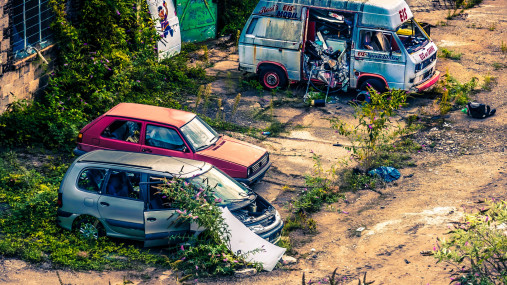
Publications » Position papers » EUROFER comments on the End of Life Vehicles Directive
EUROFER comments on the End of Life Vehicles Directive
Downloads and links
Recent updates

The European Directive on End Of Life Vehicles (ELV) has proven during the years to be a useful instrument for setting up a proper management system aimed at managing vehicles and their parts at their end of life stage.
However, technical and social developments imposed its updated to make it more appropriate for future challenges.
Nowadays, the priority is to have a functional management and treatment of the end of life vehicles and, in particular, of their parts and constituent materials. The priority is to go circular
and thus EUROFER welcomes the opportunity of contributing to the evaluation of the directive and giving his views for improving it. The present paper wants to present some general issues and/or comments linked to the actual use of and to aspects not sufficiently covered by the directive. Moreover, the paper will to highlight issues identified by the sector and how these could be solved in future.

Download this publication or visit associated links
Brussels, 27 November 2024 – The European steel industry is at a critical juncture, facing irreversible decline unless the EU and Member States take immediate action to secure its future and green transition. Despite repeated warnings from the sector, the EU leadership and governments have yet to implement decisive measures to preserve manufacturing and allow green investments across Europe. Recent massive production cuts and closure announcements by European steelmakers show that time has run out. A robust European Steel Action Plan under an EU Clean Industrial Deal cannot wait or manufacturing value chains across Europe will simply vanish, warns the European Steel Association.
Brussels, 12 November 2024 - Ahead of Commissioner-Designate Séjourné’s hearing in the European Parliament, European steel social partners, supported by cross-party MEPs, jointly call for an EU Steel Action Plan to restore steel’s competitiveness, and save its green transition as well as steelworkers’ jobs across Europe.
Brussels, 29 October 2024 – The European steel market faces an increasingly challenging outlook, driven by a combination of low steel demand, a downturn in steel-using sectors, and persistently high import shares. These factors, combined with a weak overall economic forecast, rising geopolitical tensions, and higher energy costs for the EU compared to other major economic regions, are further deepening the downward trend observed in recent quarters. According to EUROFER’s latest Economic and Steel Market Outlook, apparent steel consumption will not recover in 2024 as previously projected (+1.4%) but is instead expected to experience another recession (-1.8%), although milder than in 2023 (-6%). Similarly, the outlook for steel-using sectors’ output has worsened for 2024 (-2.7%, down from -1.6%). Recovery projections for 2025 are also more modest for both apparent consumption (+3.8%) and steel-using sectors’ output (+1.6%). Steel imports share rose to 28% in the second quarter of 2024.